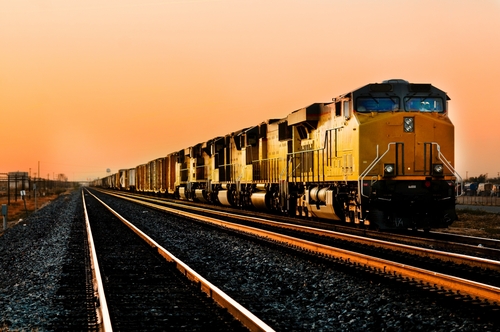
A bulk container has a long way to travel if it’s moving from one side of the world to another. The journey for a single bulk container can amount to several weeks and thousands of miles. If your shipping container is taking one of the longest trade routes in the world, you might be curious about what the actual journey looks like. Take a look at the longest trade route in the world as it extends across two continents, a multitude of countries and dozens of cities.
China’s Belt and Road Initiative
In terms of rail freight shipping, China is leading the pack, having just built the longest rail trade route in the world. Considered the largest physical infrastructure buildout in the modern world, the Belt and Road Initiative, or BRI, extends from the Chinese city of Yiwu, just off the coast of the East China Sea, all the way to the Spanish city of Madrid. This has the potential to dramatically increase the movement of goods between China and Europe.
Measuring over 6,000 miles, this massive railway extends across East Asia, West Asia, the Middle East and Europe. The trip is estimated to be 10 days faster than ocean freight shipping, but it will cost around 20 to 30 percent more.
Breaking Down the Journey
The shipping container will start out in Yiwu, located in East Asia. Then the train will make its way across China moving west. It will pass through the many forests and mountains of Eastern China, eventually moving into the deserts and plains of West China, stopping at the city of Xian, one of the largest destinations in inland China. It will then pass into the nation of Kazakhstan, traveling west across the entire country. Kazakhstan is a mostly dry, arid country made up of many deserts and plains.
The train will then arrive in Eastern Russia where it will travel up to Moscow. Then, the train will travel south into Eastern Europe, including the nations of Belarus, Poland, Germany, France and finally Spain, where it will arrive in the city of Madrid, the capital of Spain. The Belt and Road Initiative is also opening up these trains to other European markets, including London and Italy, giving shippers more options when exporting goods to Europe.
Implications of the Belt and Road Initiative
This new infrastructure project is costing the Chinese government a pretty penny. It’s expected to cost upwards of a trillion dollars with the potential to bankrupt the country. Economists are skeptical that the Chinese will be able to make a profit off their new investment, considering some of these new trains are running half-empty. While this new project has the potential to revolutionize how the world moves goods back and forth between China, Russia and Europe, it may take a while for these trains to become the preferred method of transportation.
While China continues to be the largest importer of European goods, only one of these new railways was created based on real market demand. Many of these additional routes can be used by shippers in the years ahead. Currently, the global supply chain is still relying on previous transportation methods, including air freight and ocean freight shipping.
Only time will tell if China’s new Belt and Road Initiative will take off in terms of becoming an integral part of the global supply chain. The country is currently losing money on every trip in between the two continents. If shippers are looking for a more timely, reliable mode of transportation, they might turn to the BRI in the years to come. If the BRI proves successful, it’s difficult to imagine another railway surpassing it in terms of distance.
Conclusion
Trains and railway shipping tend to lend themselves well to bulk storage containers and large shipments. It’s also a relatively dependable and stable form of transportation, as shippers no longer have to worry about pirates, storms on the open seas and volatile waves. The bulk container should enjoy a smooth ride during its trip from China to Europe, making plenty of stops along the way. Regardless of what’s inside the bulk container, companies can rest assured that their shipment will arrive safe and sound when using railway shipping.

